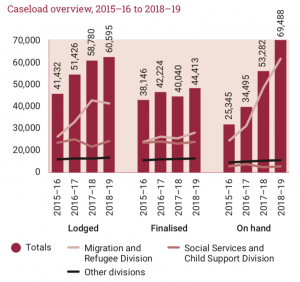By CLA Director Jennifer Ashton
We seem to be witnessing another federal policy stuff-up that is leaving some of the most vulnerable people in Australia the most exposed.
After the then Immigration Minister, Scott Morrison, “stopped the boats” in 2013, there were about 30,000 asylum seekers (or as Home Affairs insists, erroneously, illegal maritime arrivals) on Australian shores.
In the seven years since then, some have been processed to determine their refugee status, but an unbelievable 12,000 have not been assessed and remain on bridging visas. From past experience, about 60-70% of them will be found to be refugees.
The bridging visa means is that they are not entitled to social security, job seeker/keeper or any other sort of allowance during lock-down. All the government has suggested is that they, like all other temporary residents return to their home country, a little difficult if you have fled said country because of persecution.
‘Illegal aviation arrivals’?
Added to this is the growing number of people who have arrived by plane on a tourist visa and then applied for refugee status after their arrival. They are not described as illegal aviation arrivals, but are also on bridging visas until their refugee status is determined.
There are about 100,000 of them, mostly from China and Malaysia, who have arrived in the past five or six years. Australia has never before seen this level of on-shore asylum application.
Of those who have had a refugee status determination finalised, the acceptance rate has been very low, about 5%. There is evidence that many of them have travelled to Australia to work, in organised, people smuggling schemes. They end up mainly working in agriculture and hospitality with who knows what wages and conditions.
Hospitality jobs have disappeared since lock-down. In agriculture they are at the mercy of labour contractors and vulnerable to exploitation.
The process for obtaining refugee status including appeals, can take several years. It will take even longer than that as the processing capacity within Home Affairs and the Administrative Appeals Tribunal (AAT) has diminished under the Covid-19 crisis.
Lacking experience in refugee law
Several journalists have pointed out that the AAT has a large proportion of members with Liberal Party connections*, rather than any experience in refugee law. The backlog of cases that are with the AAT for appeal/review grows exponentially. In the meantime, contractors benefit from a continued source of cheap labour.
Finally, we have the refugees and asylum seekers in Manus, Nauru and on medivac in Australia. There are only a few hundred, but their condition is dire and they are at high risk of contracting Covid-19.
The Department of Home Affairs has, as far as we the public know, concentrated on the threat of terrorism. In doing so, they have dropped the ball as far as the immigration and refugee processing systems that worked well in the past.
And at whose cost?
ENDS
* Jennifer Ashton is ‘retired’ from the UN High Commissioner for Refugees after two decades operating from Zambia to Kazakhstan, including two years with UNAIDS in Myanmar. During both 2015 and 2016 she was called back to UNHQ in Geneva to help kick start urgent refugee relief projects. Her career started with the then-AUSAID and with Australian NGOs (in Cambodia from 1986-1989, work for which she received an OAM). Her first qualification in social work was followed by a Masters-by-correspondence through Deakin Uni as a nightly respite from the harsh daily realities of remote refugee camps. She is CLA’s refugee ‘Champion’, leading the organisation on refugee and asylum issues.

* A large number of these appointees were given their well-paying roles just before former AG George Brandis left the position of Attorney-General in February 2018 to become High Commissioner to the UK, and then just before current AG Christian Porter stepped out of the role to contest re-election in May 2019 when it was expected, even by the Liberal Party at that time, that Labor would win the election (The Liberal Coalition government won).
Effectively, the AAT had two rounds of appointments dominated by political allies of the Coalition in the space of 15 months (which is why Australia needs an ICAC with teeth to prevent such rorts). The AAT received 60,595 applications and finalised 44,413 applications in 2018-19 (annual report). It is drowning in a caseload that its hand-picked – for the wrong reasons – appointees cannot manage. At reporting year end, it had a backlog of nearly 70,000 case, up from a backlog of 25,000 just three years earlier. Not properly resourcing the AAT, and using it to repay political favours, appears to be a deliberate government strategy. – CLA

